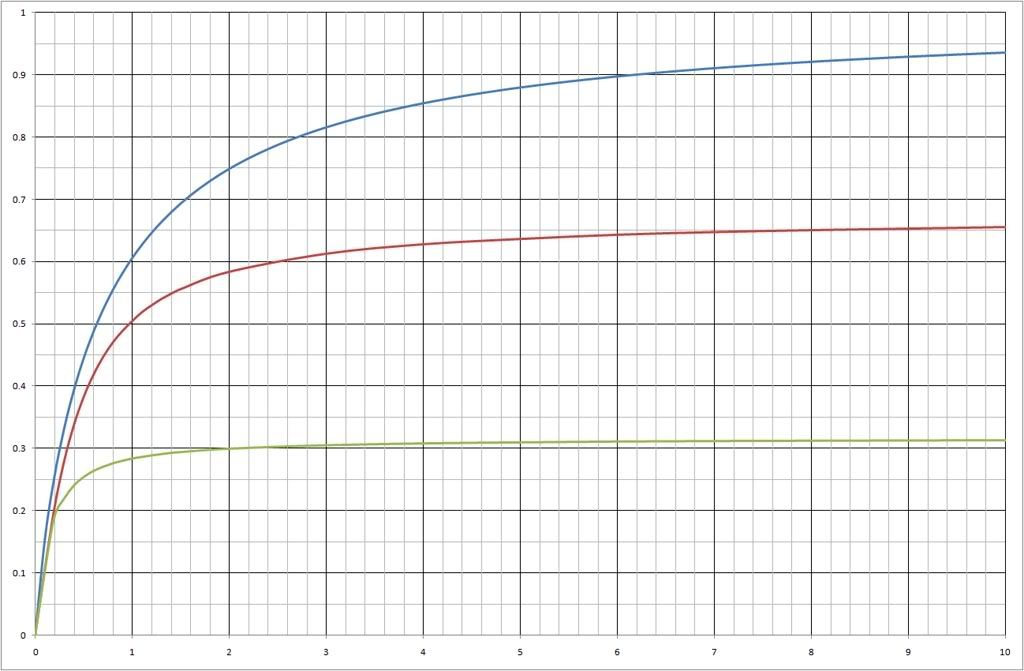vng21092 wrote:also, if you dont mind, can you explain why a smaller chamber wouldn't really affect muzzle velocity?
It will have some effect, but you'll be firing projectiles from a barrel many dozens of calibres long with moderately high pressures. You'll be right into the transonic region with that, so a lot of the energy will be being wasted on the heavily diminishing returns that pneumatics get into as they approach the sound barrier.
Chamber size is a diminishing return itself, even without modelling the losses in flow. A C:B ratio of 0.5:1 is a lot more efficient than 1:1 is. Here were some results I cooked up a while ago for one of my launchers:

The X axis is the ratio of the chamber volume to barrel volume, and the Y axis is the fraction of the theoretical maximum energy achievable with an infinitely sized chamber.
The blue line would be the energy of the projectile without any losses in flow. You can see it's levelling off though.
The red line is with the losses in flow - you can see this levels off faster, and is practically flat from about 5:1 upwards.
The green line is with flow losses, as if the valve were half the diameter. This is practically flat from about 2:1 upwards.
You've got quite a good valve. But still, a 1:1 chamber will still be using twice as much air as a 0.5:1 chamber for only a potential third increase in energy (even without bearing in mind that a huge portion of that potential will be lost because of the transonic inefficiency).
For a 4.5mm barrel, 45cm long... well, I had anticipated a slightly longer barrel than this with my suggestion. Still, the point is still valid.
For a steel BB, a ballpark at 300 psi would be 650 fps. Halve the size of the chamber and you'd be in the region of 580 fps - a bit of a drop, but you'd get twice as many shots!
